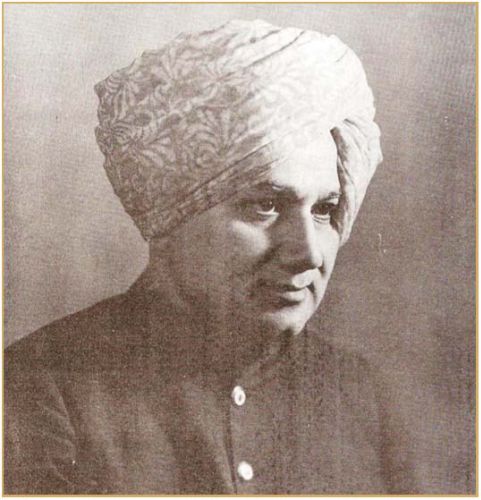Bal Gandharva

Subscribe to read full article
This section is for paid subscribers only. Our subscription is only $37/- for one full year.
You get unlimited access to all paid section and features on the website with this subscription.
Not ready for a full subscription?
You can access this article for $2 , and have it saved to your account for one year.
- Real Name: Narayan Shripad Rajhans
- Born: 26 June, 1888 (Sangli, Maharashtra)
- Died: 15 July, 1967 (Pune)
- Primary Cinema: Hindi
Hailed as “Nat Samrat”- the king of thespians, Bal Gandharva was a singing star known for playing female roles in Marathi theatre in the first half on twentieth century. He is known to have performed around 5000 stage shows and played 36 different roles in 27 plays. The ultimate maestro of the Marathi stage made a mark for himself not only in Maharashtra but all over India.
Born in a Deshastha Brahmin family to parents Shripad Rajhans and Annapurnabai Rajhans, Narayanrao Rajhans was inclined towards music and stage very early in life. There are various anecdotes about how the thespian got his name but the most accepted one is that it was the Lokmanya Bal Gangadhar Tilak, the national leader who bestowed upon him the appellation when the latter was only 10. Narayanrao had the honour of singing for Tilak when the leader exclaimed: “This youngster is indeed Bal Gandharva.” Since then he came to be known as Bal Gandharva. It was later at the age of 17 that Gandharva joined the Kirloskar Mandali and started acting on stage. He was trained by the veterans of Marathi stage, Moroba Wagholikar, Balkove Natekar and Bhaurao Kolhatkar, who were at that time known as the “holy trinity” of Marathi Sangeet Natak. Gandharva became famous for playing roles of Shakuntala, Soubhadra and Rukmini among many others. The charm of his characters was such that it transcended the boundaries of male and female audiences. He reached the heights of his career playing Sindhu, a singing heroine in Ram Ganesh Gadkari’s Ekach Pyala.
Gandharva was known to pay extreme attention to the costumes, set design and makeup and jewelry in his shows. Women used to get costumes and makeup similar to his characters and the princes and other wealthy patrons had ideas of remodeling their houses similar to his stage aesthetics. He came to epitomize the standards of feminine beauty in Maharashtra and surrounding regions. His look embodied the tribhangi posture similar to Raja Ravi Varma paintings. The expenditure however incurred him huge debts when he started his own theatre company, Gandharva Natak Mandali in 1913.
His stint in cinema lasted only one film with Prabhat Film Company, V Shantaram directorial Dharmatma (1935). Ghandharva had originally signed for 6 films with Prabhat but left after the first one owing to his difficulties in adjusting to a new medium and also portraying a male character, contrary to his public image. He returned to stage in 1936 only to bid adieu to it 1944, handing over the Mandali to Goharbai Karnataki, a stage actress and Hindustani vocalist, who worked as his substitute for the female parts. He started concert singing as a full time pursuit until paralysis incapacitated him in late fifties.
Gandharva was married twice, first to Lakshmibai who died around 1945 and then later to Goharbai Karnataki. His marriage to Goharbai though was not a smooth ride as the religious differences were not accepted in the community. Goharbai however stayed by his side till her untimely death in 1964. Three years later, Bal Gandharva died on 15 July, 1967 in Pune.
References
Image courtesy:
https://en.wikipedia.org/wiki/Bal_Gandharva#/media/File:Narayan_Shripad_Rajhans_(Balgandharva).jpg







.jpg)



